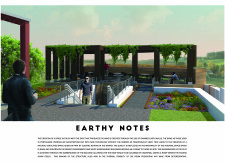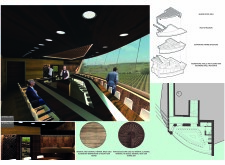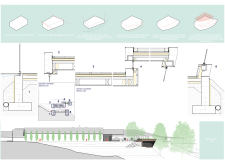5 key facts about this project
The design is situated in a landscape that supports wine production, highlighting a direct connection to the earth. Its main goal is to promote sustainability while blending harmoniously with the environment. By using modern architectural techniques, the structure not only meets the needs of wine production but also enhances the visitor experience.
Site Utilization and Accessibility
Rammed earth walls form a key part of the design, drawing inspiration from traditional Portuguese architecture. These walls help the building fit into its surroundings and offer a natural aesthetic. The structure is set into the ground, allowing for better cooling and maintaining ideal conditions for storing wine.
Accessibility is considered in the layout, with a ramp leading up to the tasting room, ensuring that all visitors can easily navigate the space. Electric heating provides comfort during winter, making the interior welcoming regardless of the weather outside.
Sustainability Features
A green roof plays an important role in the project. It collects rainwater which is then used in a graywater system, supporting efficient water management. This feature works alongside natural ventilation, ensuring a pleasant climate indoors.
The use of thermal mass in both interior and exterior spaces helps manage temperature throughout the year. The contrast between dark interiors and bright exteriors creates an appealing atmosphere for guests, encouraging them to enjoy the local wine.
Design Elements
The design incorporates Portuguese cork as cladding, which helps keep the interior cool during hot days. A shaded roof area protects the building from direct sunlight and contributes to maintaining a comfortable temperature inside.
The tasting room layout is designed to offer wide views of the surrounding landscape, allowing visitors to connect with the environment. The curved facade enhances the feeling of space while providing a smooth flow inside. Extensions of the building offer necessary shade, preventing overheating and promoting natural airflow throughout the area.
Attention to detail is evident in every aspect of the design, ensuring that it functions well while also blending into the natural landscape. The choices made reflect a strong consideration for sustainability and an inviting atmosphere for all who visit.






















































